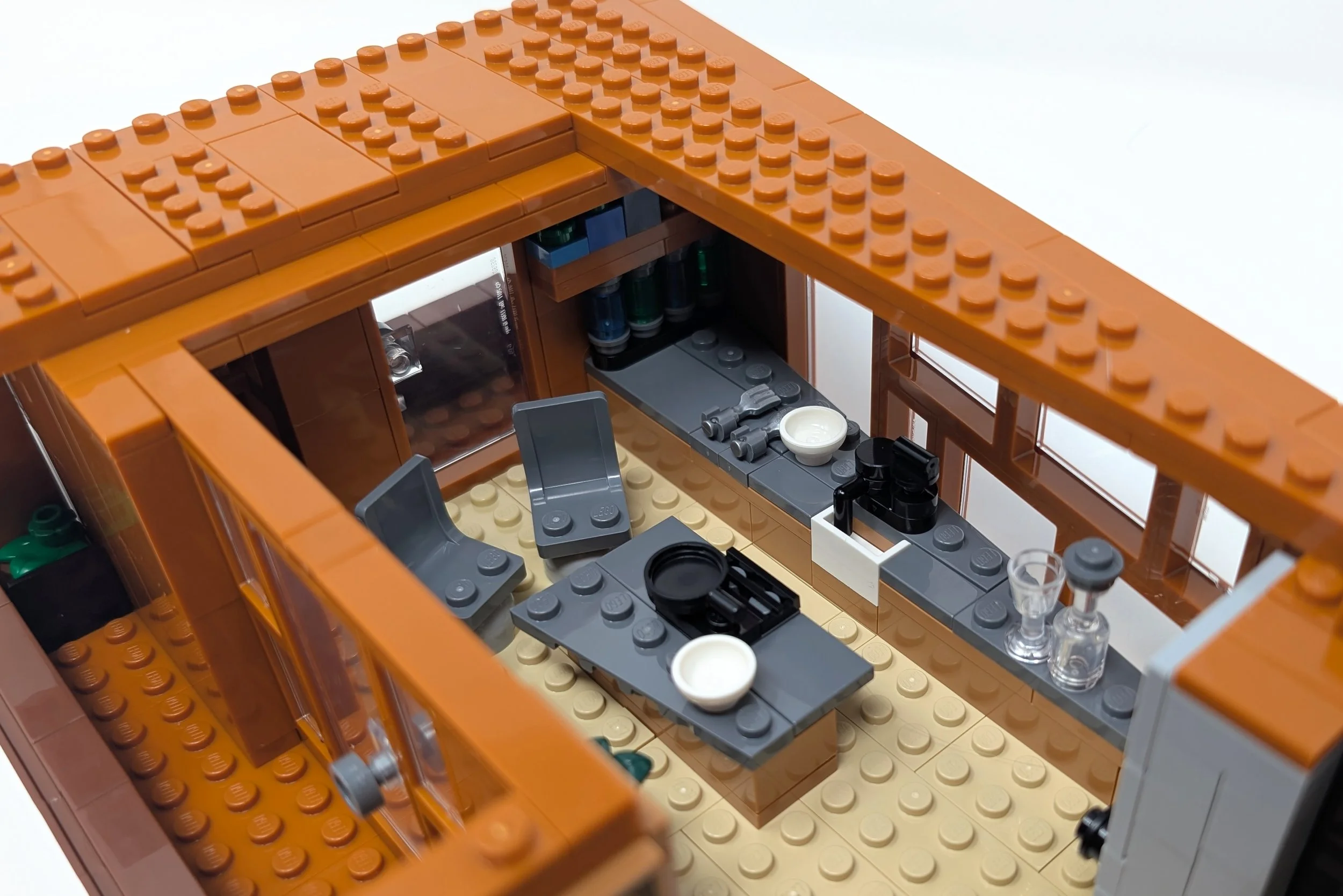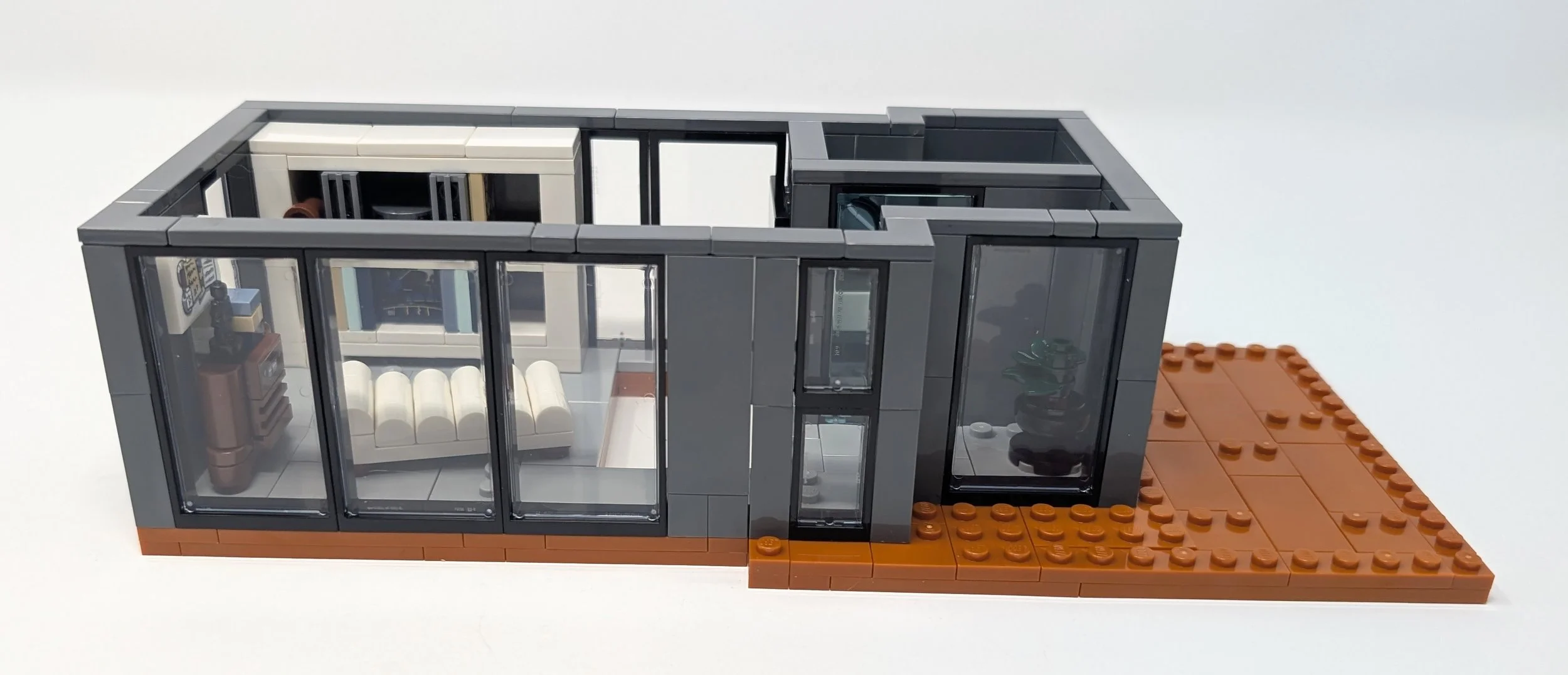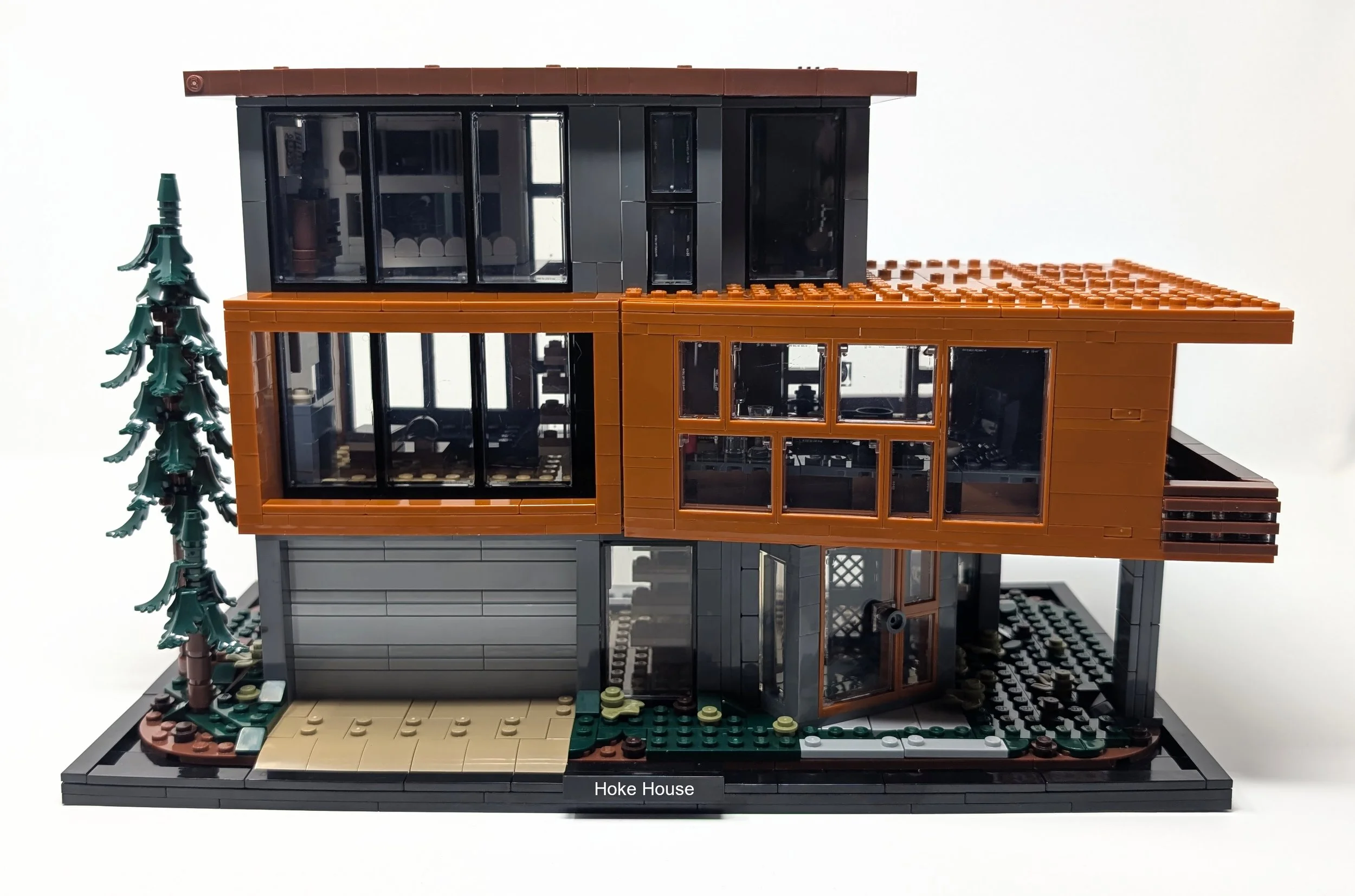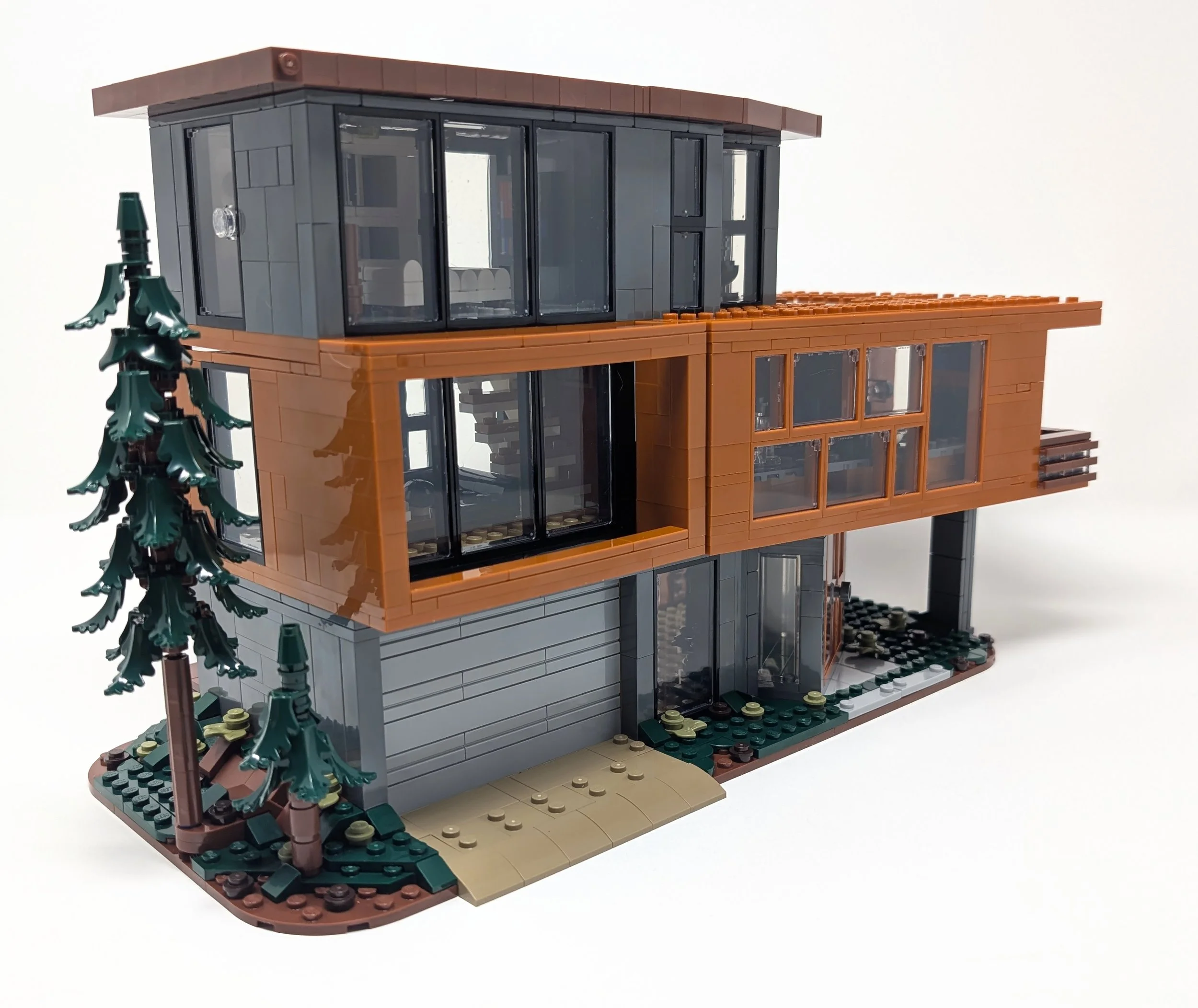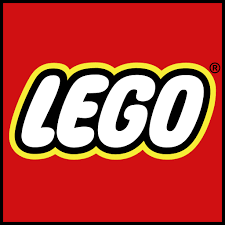Twilight and Timber: An Architectural Study of LEGO’s Hoke House
/Today’s guest article comes from Koen Van Der Hoeven, who is a data and LEGO architecture fan located in the Pacific Northwest region of the United States. You can find more of his writing on Brick Architect.
LEGO and Modern Architecture
In my last article, we explored the direction we are seeing with architecture-based sets making their way into other themes, such as Icons and Ideas. In this article, we will explore a perfect example of this as LEGO expands their definition of “Architecture” through 21354 Twilight: The Cullen House, or as I will refer to it moving forward, 21354 Hoke House.
We will look at how the 2007 modernist and contemporary Hoke House situated in Portland, Oregon, exemplifies modern architecture and how this translates to LEGO form, while in parallel, touching upon the role that architecture can play in creating long-lasting imagery in pop culture history.
What Is the Hoke House?
Designed by architect Jeff Kovel of Skylab Architecture and completed in 2007, the Hoke House is a stunning modern contemporary residence nestled on the edge of Portland’s Forest Park. Built for John Hoke III, Chief Innovation Officer at Nike, the house spans 4,800 square feet and seamlessly blends cutting-edge modern design with natural elements. The architectural design minimizes the building’s footprint while maximizing the sense of a floating, forested tree-house experience.
The house features an extensive system of decks and patios connected to the interior spaces by floor-to-ceiling openings, providing generous outdoor living zones that are usable throughout different seasons. With Portland sitting below the national average of 205 sunny days per year at 144 sunny days, Skylab Architectures ensured that the abundance of windows and skylights in the building maximizes interior light intake. The use of natural materials, such as Western Red Cedar, and the integration of the surrounding environment make the Hoke House a harmonious blend of urban and wild elements.
Image via Skylab Architecture
While this amazing structure is worth all the accolades it deserves solely on the merit of the structure alone, it is 2008’s The Twilight Saga, a film adaptation of Stephenie Meyer’s Twilight books that thrust this structure into the spotlight. Being the residence of the Cullen family, those familiar with the films will easily recall this structure’s dominance. While pop culture should not be the reason an amazing architectural marvel gets the spotlight, it is through these films that the world became aware of the amazing work done by Skylab Architecture and what has resulted in this structure making its way to LEGO form.
(More pictures and information about this amazing property and other work can be found directly in the Skylab Architectures’ portfolio: Hoke House.)
LEGO’s Take on the Hoke House
21354 Hoke House is the 62nd set released through the LEGO Ideas program based on the project designed by user LobsterThermidor. With availability that began on the 1st of February 2025, this set retails at $220 US | £190 UK | €220 EU, giving it a price per part of 11.0c/9.5p/11.0c—which is not that unfavorable given the stunning architecture intellectual property it is based on. This modern architectural marvel comes as a dense build, measuring 8.5 in (21cm) high, 14.5 in (37cm) wide and 7 in (18cm) deep.
21354 Hoke House is a three-story residence reflecting modern 21st-century architectural styles. The set is modeled almost perfectly off the real-life counterpart. However, it takes some liberties with the interior to keep the size down. The four-and-a-half-bedroom house is reduced to a one-bedroom house, with two living room spaces on the ground and second level, a kitchen on the second level, and the “bedroom” and bathroom on the third level. (I put the word bedroom in quotes as the interior is modeled after scenes from the Twilight films in which the characters do not need to sleep, and thus, the house has no bedrooms.)
In typical LEGO fashion, the set is built with modularity in mind, allowing each level to be removed to display the contents within. I love this choice as not only does it allow for a great display, but it also goes in line with LEGO’s new push for collaborative play, as it allows different people to build each level independently. Although there is a common theme throughout the structure, each level has its differences in detail that allow it to stand out.
In the next few sections, I will deep dive into each of the three levels in comparison to some of the interior and exterior designs of the set’s real-life counterpart.
Ground Level - The Foundation of Design
The first thing you notice on the ground level is the foundation that this structure sits on. In real life, the Hoke House is built onto a sloped site, something that influenced the design decisions the architect had to make, but this is not something we see replicated in LEGO form, instead opting for a flat foundation. The earthy green and brown of the foundation do a great job at capturing the gloomy Pacific Northwest Forest floor, with the dark moss colors and shapes coming through effectively. Given that we do not have physical access to the real-life structure, the LEGO rendition of this model does a great job at allowing us to appreciate some of the details up close, albeit in LEGO form.
The first thing we must appreciate is the unique shapes of this structure. Leaning away from regular square shapes, this structure in LEGO form has 11 edges, with each being of varied length. The entryway does a great job at breaking up the boxiness and builds a natural but jagged edge to the structure by jutting out at a 45-degree angle. This angling allows not only for more creative space usage of the interior but also immediately draws one’s eyes to the structure. When combined with the abundance of glass for the entryway, it makes the space more inviting.
Given the space limitations of the build and focusing more on height than the footprint available, the LEGO set builds the appearance of a garage through a one brick-wide garage door—this door does not actually open like a real garage would, since the interior of the “garage” is the living room in the model. As this is a LEGO set and a display piece, we must err on the side of wishful thinking at times if we want pure realism and accurate scale, with this garage detail being a great exterior detail that doesn’t work when we go inside.
The colors and shapes we see in the LEGO set are a great translation of the real-life counterpart, capturing the modern look of the structure elegantly. Given the size limitations of the set, there were design decisions made to the interior that do not align with that of the real-life structure, though. As we look through the various levels, I will focus on the exterior details of both the LEGO and real-life version of the Hoke House, as a lot of creative liberty was taken with the interior in LEGO form.
Image via Skylab Architecture
As we can see in both the LEGO and real-life version, windows are a prominent feature of the Hoke House due to their ability to enhance natural light while creating a seamless connection between the indoor and outdoor spaces. Modern architecture principles emphasize openness, with windows being the perfect material to make a space feel more expansive and airier. Given that this building sits at the edge of an iconic forest, these windows can often be used to frame scenic views, allowing both the indoor and outdoor spaces to feel in touch with the surrounding environment. We see this effectively displayed in LEGO form through the large windows.
While windows take up a large amount of the wall space, we do see a variety of colors used in the wall through Medium Stone Grey and Medium Nougat. This color variance adds an accent wall feel to the build while capturing the natural elegance of nature through the woodland accent.
Second Level - Framing the View
Moving up to the second level of the Hoke House, we see wood colors take over the color palette with Medium Nougat dominating the space. We see a lot of the design choices of the ground level flow into the level above, with sharp geometric angles and windows being notable. While these are the focal points, the first thing my eyes are drawn to is the exposed framing gap outside the living room window and the subtle 5-stud deep angle we see in the kitchen.
While I will go into the framing in more detail later, the angling—as with the entryway of the first level—creates an accent point that breaks up what could otherwise be a boxy shape. This angling mirrors that of the real-life counterpart, being subtle but imposing at the same time, a juxtaposition. In LEGO, this is accomplished very easily through the use of hinge and slope pieces, with the gradual curvature giving a comforting and inviting feel as the building surrounds you.
To get the most out of the window framing, we need to place the second level on top of the first level. You can immediately see how framing the window adds depth to the space while allowing for an airy look to the window, almost a balcony without being one. While we could have just seen a one deep brick window frame, the choice of protruding it out not only accentuates and adds detail in the form of depth but also highlights another detail that we see in the real-life structure.
In the real Hoke House, we do not see this protrusion as greatly, but given the LEGO designers had to work with the limitations of the depth of LEGO bricks, we see it accentuated a little more in LEGO form, which is not a negative as it is a wonderful detail.
One of the goals of Skylab Architecture when designing the Hoke House was to strategically place outdoor living spaces in opposite cardinal directions from the core living spaces. This allows for more variety in spaces to explore for the residents, opening the space up to all climates.
In LEGO’s representation, while we unfortunately are not graced with all the outdoor space available, we are still met with many balconies. These outdoor spaces can be found on both the first and second floors, creating that exterior space that architects wanted for the residents.
The LEGO balconies do a great job at capturing the thin and sleek look of the Hoke House but move slightly away from a pure modern glass aesthetic, unlike the real-life counterpart. This design decision was likely made to break up from what otherwise would be a set overloaded in transparent panels.
Image via Skylab Architecture
I prefer the railing aesthetic of the LEGO version, not only for its safety and aesthetic practicality (glass never stays fully transparent due to streaks) but due to its color choice. The Reddish Brown interlaced with Transparent for the balcony helps give the railing a more natural feel that blends in with the environment better. Taste is subjective, however, as both look great.
While this write-up focuses on the exterior details that make the LEGO rendition of the Hoke House, it is worth mentioning the great work by LEGO designers to ensure the interior lives up to modern design. The kitchen is the perfect representation of this. Taking up half of the second level, the kitchen creatively utilizes space while using sharp edges. These sharp edges and clean lines align with the early 20th-century modernist movement that emphasizes geometric shapes while eliminating any unnecessary ornamentation.
The sharp edges in both interior and exterior design culminated in what is now seen as a sleek and uncluttered aesthetic, focusing on precision. The tabletop and kitchen counter embody this sleekness through the use of wedges, utilizing the angling of the exterior wall to follow the pattern. The use of a hinge on either end of the kitchen locks this angling in place, adding a subtle yet effective detail to the modernistic design.
The kitchen is stocked with everything a kitchen needs, from pantry space, a burner, a sink, and even a beautiful fridge, but what stood out the most to me was something built with just six pieces. The faucet is beautiful, packed with various 1x1 elements to create small details. The color and shape contrast perfectly exemplifies the farmhouse sink design that is becoming common in modern interiors across the world. These small details highlight the attention to detail the LEGO designers put into ensuring that this set is not only a great display piece based on its exterior but that the interior matches.
Third Level - Modernist Living
As we move up to the model’s third level, we return to Medium Stone Grey being the dominant color. This sandwiching of concrete and wood melds modern and natural materials, giving the space its contrasting aesthetic. We once again see the influence of windows driving the exterior wall details of this floor, continuing the design philosophies we saw on the levels prior.
One notable callout is that this level’s livable space is smaller than the other two levels, with a good chunk of the floor plan taken up by the roof above the second-floor kitchen. This gradual tapering of size of levels helps add to the unorthodox design of Hoke House, with the kitchen feeling like it is not part of the rest of the house, jutting out as a singular room escaping the main body.
Just like with the kitchen, the interior emphasizes modernism through its design and choice of decor. Opting for more modern brighter colors to lighten up the room in conjunction with the windows. The bright white of the bookshelf and chaise look straight out of a Vogue magazine cover, giving the room the look it is going for.
One thing I love to see in LEGO residences are brick-built bathrooms. LEGO has so many different designs for bathroom appliances, and each seems to be more accurate than their real-life counterparts. The LEGO designers could easily have chosen to ignore what can be viewed as an unglamorous room, but through this inclusion, it makes this house a more realistic living space for its LEGO inhabitants. In real life, the Hoke House is built with four and a half bathrooms, adhering to the common planning recommendation of two bathrooms for every three bedrooms, but in LEGO form, one is more than enough.
Although probably a reference to the films, the inclusion of a door opening into nothing is a safety hazard and baffles me but is something that can easily be replaced with a window panel should it bother you as a builder.
Roof - Flat But Not Forgotten
Flat roofs are an increasingly popular choice in modern architecture, not only due to their sleek appearance but also due to practical benefits. While the LEGO variant of this roof is completely flat, a flat roof normally has a minimal slope of 10 degrees or less to still allow water to drain. Flat roofs are increasingly popular in urban homes and commercial buildings due to space-efficient design and versatility, which allow ease of building an additional floor.
For the Hoke House, this roof was likely done as a design decision to continue the flat, smooth aesthetic of the structure. To accomplish this in LEGO form, the roof is built on its side, allowing the flat edge of the brick and its shine to be an added detail. The roof is built in two halves and slots into place and can easily be removed to show details within. While there is attic space in this roof, the use of exposed studs emulates a ventilation system, allowing for a constant and efficient flow of air through the structure. It is simple yet effective, adding detail while being practical.
When you flip one of the roof halves over you will see that the exposed studs for ventilation play a dual purpose, also being used as ceiling lamps. As studs on side construction is utilized to build the roof, the LEGO designer was able to use the 1x1 Brick, Headlight (Part 4070) part to have three connection points, building stability and detail at the same time.
I have not seen LEGO often build ceiling lights into structures before and it was a very welcome detail to add, taking very little effort to put together to add a huge return for the builder and scene. The roof, although simple is a great crowning piece to what is a remarkable LEGO rendition of this marvelous structure.
The Rise of the Modern Mansion
You may be surprised that 21354 Hoke House is not the first LEGO set that takes a stab at modern contemporary architecture in minifigure scale—nor will it be the last. To compare two recently released modern mansions, we can look at 42639 Andrea’s Modern Mansion released in January of 2024. Whether it be smooth exterior texture through the use of flat panels or the abundance of glass, there are many similarities between the two. Upon closer examination, you can see the similarities go further. Both sets have three floors, a foundation-level garage, and even two trees that are offset in height to finish off the building and provide a sense of scale.
While I point out similarities, these are not critiques, though, as each build is very different—you would be hard-pressed to find someone who says the sets look the same. Instead, Hoke House just shares some similarities in areas that made the predecessor successful. What the structures do well, though, is capture the environment in which they are set, with Hoke House capturing the Pacific Northwest feel and Andrea’s Modern Mansion capturing the Malibu or Miami aesthetic.
With both sets priced in a similar price bracket, we do see the difference that IP makes to prices, with LEGO having more flexibility in creating a larger structure that has more pieces. Andrea’s Modern Mansion has 2,275 pieces compared to Hoke House’s 2,001, despite being $20 cheaper. A better price-per-part ratio or having more elements does not necessarily make the former a better set, though. I prefer the latter of the two due to its closed-off exterior (unlike the dollhouse) and more realistic look. If I had the choice to live in one of these houses, I would pick 21354 Hoke House.
Given the success of 42639 Andrea’s Modern Mansion and the likely impending success of 21354 Hoke House, I am sure LEGO will capitalize on the popularity of these buildings and release more modern structures through the Friends or City lines or beyond in the future.
A LEGO Architecture Set in Disguise
Since I keep referencing the architecture of this model, it is worth investigating how this set would look if it had been an actual LEGO Architecture set. What better way to do this than to build the iconic black-tiled Architecture base for this set? To accomplish this, I built a foundation 44 studs wide and 24 studs deep. To finish it off, I printed the name of the building, Hoke House, on a sticker in Arial font to match the style used for labels in Architecture-themed sets. While I was skeptical at first over whether this would look nice, the set almost looks purposefully designed for a base, framing it to perfection.
The set’s design fits the Architecture-themed base perfectly, fitting perfectly into the Architecture line of sets.
I wish LEGO would design more iconic modern houses and release them as sets in this way for amazing display pieces, whether these be iconic pop culture buildings or structures from famous architects such as revisiting the Farnsworth House by Ludwig Mies van der Rohe or the Kaufmann House by Richard Neutra. If those houses are new to you, I recommend you look both up to appreciate these modern architectural beauties.
Images via LEGO and ArchDaily
Conclusion - A New Modern Classic
Ignoring the subject matter that this house comes from and looking at this set objectively from an Architectural lens, 21354 Hoke House is a phenomenal build. This model does not feel like a LEGO set, instead capturing the emotions I would have felt had I seen this build at a LEGO convention as a MOC (My Own Creation) built by a fan.
This set is displayable from all angles, has amazing shapes and colors and all around feels like an amazingly realistic set. I have not seen a LEGO building be more minifigure scale accurate to a real-life counterpart than this, and for that, I must sing its praises.
Even if you are not a fan of the Twilight saga, this set is a worthwhile pickup even at its high price—and you could sell the minifigures to movie fans for a pretty penny to help lower the cost!
DISCLAIMER: This set was provided to BrickNerd by The LEGO Group. Any opinions expressed in this article are those of the author. Photos in this article are by Koen Van Der Hoeven unless otherwise noted.
What other modern architecture buildings would you liek to see as a LEGO set? Let us know in the comments below!
Do you want to help BrickNerd continue publishing articles like this one? Become a top patron like Marc & Liz Puleo, Paige Mueller, Rob Klingberg from Brickstuff, John & Joshua Hanlon from Beyond the Brick, Megan Lum, Andy Price, Lukas Kurth from StoneWars, Wayne Tyler, LeAnna Taylor, Monica Innis, Dan Church, Roxanne Baxter, and Steven Laughlin to show your support, get early access, exclusive swag and more.












